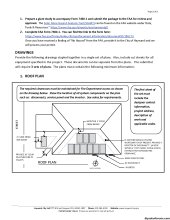TheHappyNomads
New Member
I'm hoping to make the final couple of purchases of equipment to get my system installed. I'm down to fuses, cables\wiring, and disconnects. I have been reading through different build threads and there seem to be a ton of OV disconnect options and I really would love some advice on which one(s) make the most sense.
4s2p 415w roof top panels feeding (2) LV6548s
In some of Will's videos I see an enclosed DIN Breaker PV Disconnect, many others have recommended IMO units and I've seen a few Square D H361s mentioned as well. I will be in a non-grid feeding setup but will access grid power for low PV days to charge 48v battery system.
IMO style PV disconnect on roof at each string of panels?
DIN Breaker style disconnect mounted near LV6548s?
Square D H361 mounted near LV6548s?
Something else? Both? All of these lol???
Thanks
4s2p 415w roof top panels feeding (2) LV6548s
In some of Will's videos I see an enclosed DIN Breaker PV Disconnect, many others have recommended IMO units and I've seen a few Square D H361s mentioned as well. I will be in a non-grid feeding setup but will access grid power for low PV days to charge 48v battery system.
IMO style PV disconnect on roof at each string of panels?
DIN Breaker style disconnect mounted near LV6548s?
Square D H361 mounted near LV6548s?
Something else? Both? All of these lol???
Thanks




